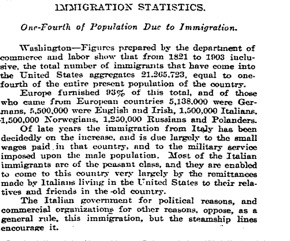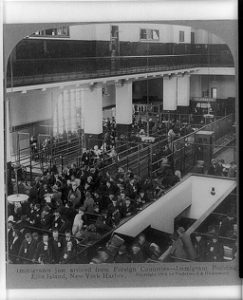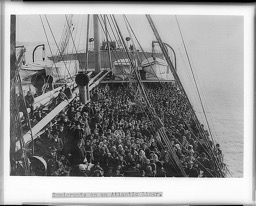Immigration’s Effect upon Women (1900)
This magazine article from a 1900 edition of Harper’s Bazaar talks about the effects that immigration will have on the women in the country, and the ramifications that they will face because of the trend. This included women of all races, but was primarily focused on white women. Women would have had a personal interest in the matter as many married male immigrants that came to the country without their wives, as they could most likely not afford it. Competition among laborers also increased which would subsequently lead to a reduction in wages, and the tax of the increased competition is falling on unskilled labor, which is largely related to the sphere of women’s wage-earning. This article correlates with the overall theme as it also details more effects that occurred due to the immigration frequency and how it affects the country economically and socially. This source was found through the ProQuest database on the Dickinson library website.
One-Fourth of Population Due to Immigration (1904)

This newspaper article from the Wall Street Journal on March 18, 1904 details how the population of America is changing with the recent influx of immigrants to the country. Most of the immigrants up to this point have come from Europe, as they make up 93% of the total. The article also notes the recent rise of immigrants from Italy, as this is an early indication to how much of an impact they will have moving forward. The article connects to the topic of the paper, as this has a direct correlation between how the population of the country is being affected by the immigrants. With the rise of immigrants moving into the country, the percentage of population was bound to grow year by year. The early numbers of U.S. immigration were from Europe, as the increase of emigrants from Asia did not come until later in this century. The source was found through the Dickinson Historical Newspaper Database through the Wall Street Journal.
Ellis Island Immigrant Building (1904)

This photograph comes from the Library of Congress and is showcasing an aspect of immigration. This is depicting the immigrant building at Ellis Island, and this was of major importance to the immigration landscape overall. All the European immigrants would have to come through this building to be granted citizenship into the country, so this building could have been the center for all the operations on the eastern front. Taken in 1904, it shows the newly arrived immigrants waiting for their turn to pass through Customs in hopes to obtain their citizenship. The main point of this source relating to the topic is to show how much of a process was needed in order to become a citizen and that a lot of steps were required. The final step of the process was conducted in the building pictured. The population and immigration trends were closely related in both having Ellis Island as a passageway into America.
Immigrants on an Atlantic Liner (1906)

This photograph taken in 1906 portrays many immigrants arriving into America on a boat, and it is signaling the greater overall pattern of mass immigration into the United States. Since this was taken in 1906, it was during the peak of immigration, and was indicative of a greater trend. This source aims to show viewers the great quantity that many of these ships contained, and the sacrifices that many people took to obtain their dream of being an American citizen. This connects to the greater theme of the project as it can be of assistance for someone who does not understand the full effect of immigration to view this photo and have a better understanding of what really transpired. The ships that these immigrants were usually overcrowded and unsanitary, and a lot of immigrants would not even make the journey to America because of these issues. This image goes to show the level of conditions on the ship, and these were usually not good. This photo was found through Library of Congress website.
President Wilson Speech (1915)
In this speech from January 28, 1915, President Wilson is speaking to the House of Representatives in vetoing a bill requiring literacy test for all immigrants coming to the United States. He claimed that the test “embodies a radical departure from the traditional and long-established policy of this country.” This speech is important in relating to the topic of this project, as a bill like this would have limited to growth of immigrant population in the country. A limited amount of immigration into the country would have resulted in a lower percentage rise of total population, and especially so in urban centers. The speech came during World War I, but before the United States became involved, so it allowed for many groups of immigrants to come into the country to escape the war without going through this rigorous test. The transcript of this speech was found through the ProQuest database through the Dickinson Library.
